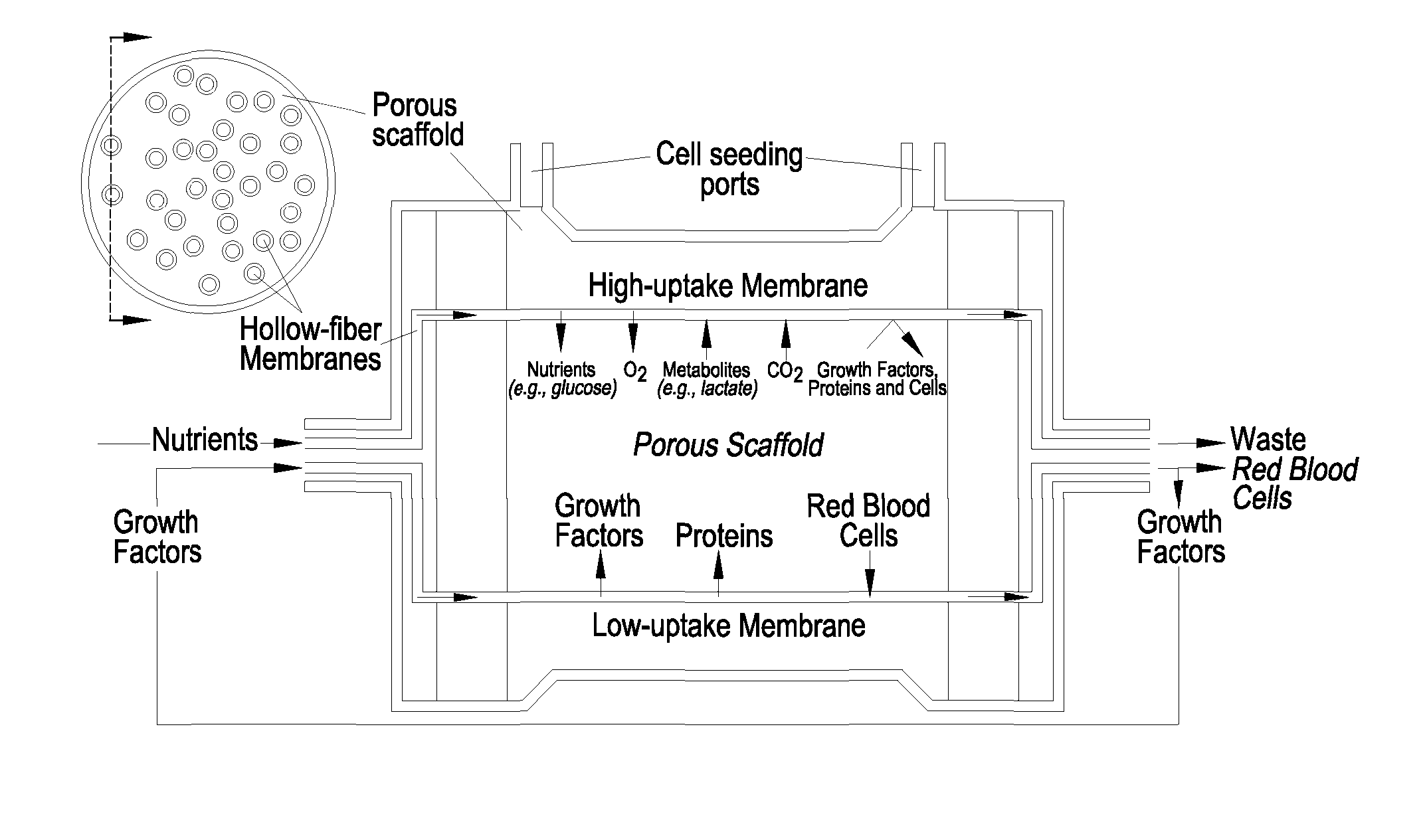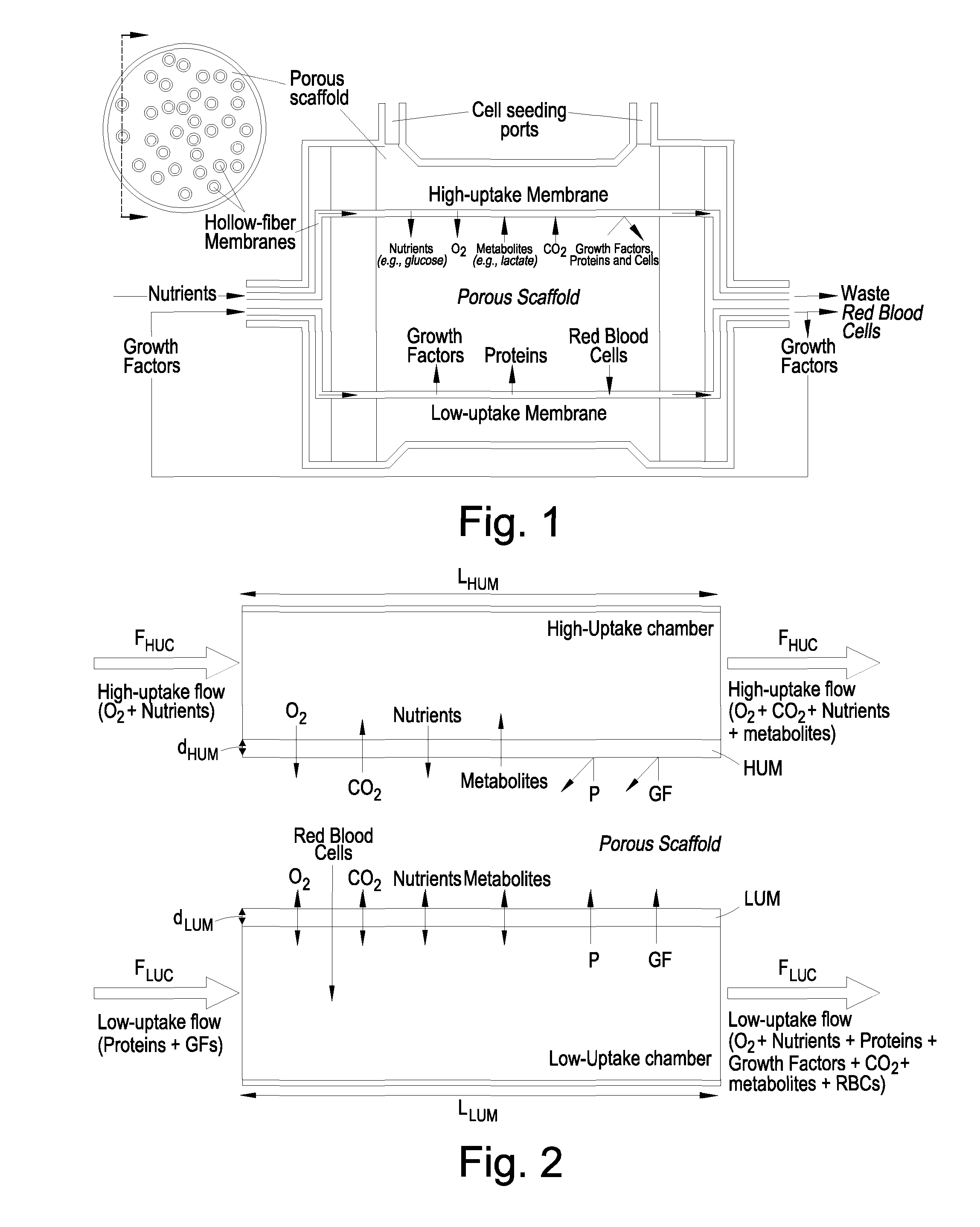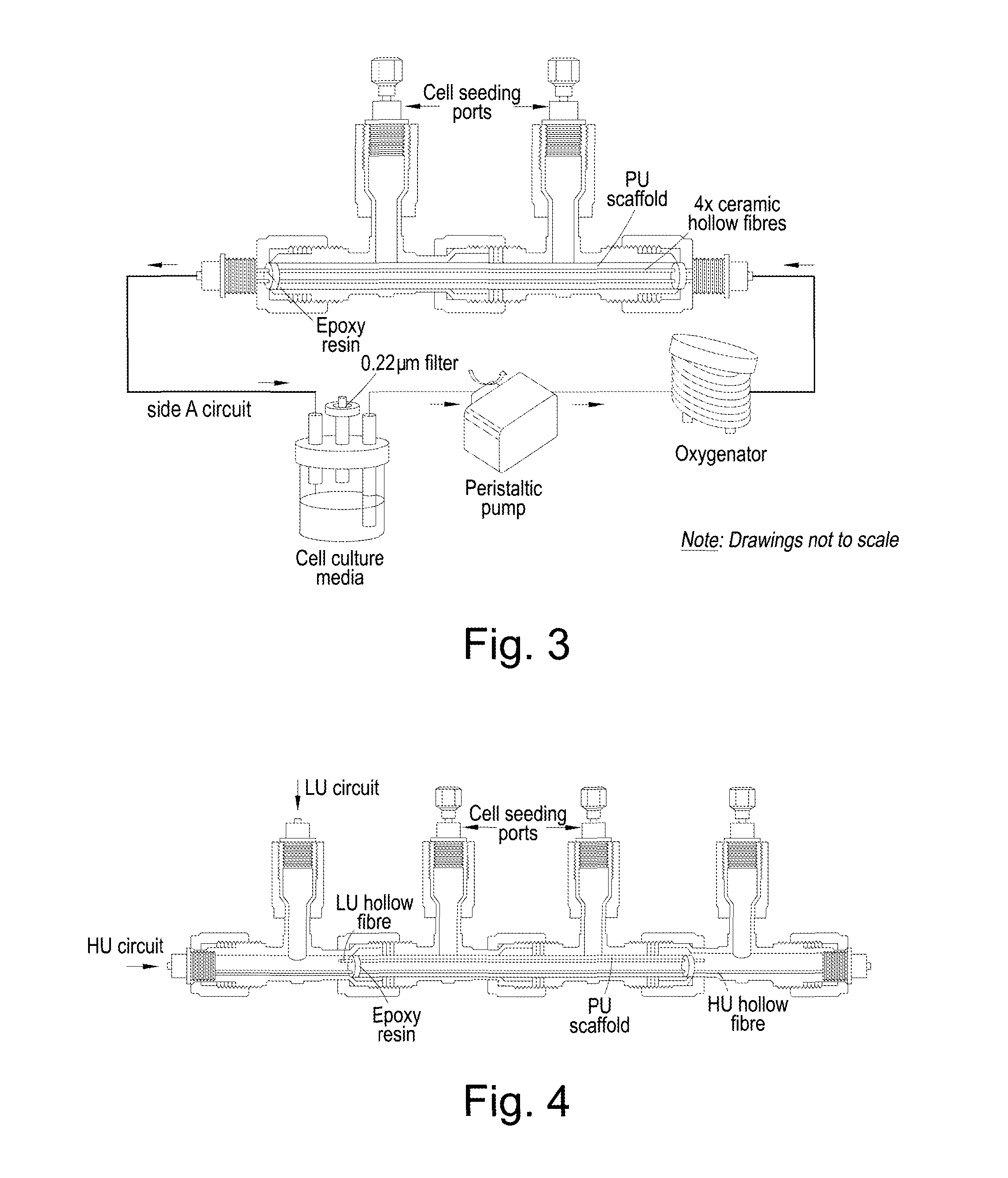Bioreactor
- Summary
- Abstract
- Description
- Claims
- Application Information
AI Technical Summary
Benefits of technology
Problems solved by technology
Method used
Image
Examples
example 1
Culture of Stem Cells in a Single-Type HF Bioreactor in a Cytokine-Free Environment (Establishment of Normal Haematopoiesis)
[0114]Mononuclear cells (MNCs) isolated from umbilical cord-blood (UCB) were cultured in a single-type HF bioreactor (see FIG. 3), in the absence of any exogenously-added cytokines. This design of bioreactor is composed of four ceramic hollow fibres immersed within a polyurethane scaffold coated with collagen type I.
[0115]A volume of 5 mL of cell culture medium containing UCB-MNCs were seeded onto the PU-coated scaffold at a final density of 1.6×107 cells·mL−1. A total volume of 400 mL of medium composed of IMDM with 30% FBS and 1% pen / strep was perfused through the lumen of the ceramic hollow fibres in recirculation mode and fully replaced every 7 days of culture. The flow rate was 6.7 mL·h−1. The cells were cultured over a period of 22 days in a cytokine-free environment.
[0116]Evaluation of the capacity of the single-type HF bioreactor to sustain cellular gro...
example 2
Culture of Stem Cells in a Dual-Type HF Bioreactor for the Production of Human Red Blood Cells
[0119]The designed 3D dual HF bioreactor (see FIG. 4) incorporates two different hollow fibre types, for the delivery and use of two different streams of molecules. FIG. 4 presents the schematic of this bioreactor, which integrates two different streams for feeding the bioreactor. MNCs isolated from UCB were seeded into the bioreactor and a cocktail of 100 ng·mL−1 SCF and 3,000 mU·mL−1 EPO were used to further potentiate the expansion of these cells (when compared to the cytokine-free environment described above) and drive the differentiation of the cells towards the enucleated RBCs.
[0120]Two bioreactors, composed of four PAN hollow fibres and four ceramic hollow fibres were prepared, according to the protocol developed for the fabrication of the bioreactors as described above. PAN hollow fibres were treated by annealing at 96° C. for 10 s followed by surface hydrolysis at 80° C. for 25 min...
example 3
Culture of Leukemic Cells from Patients in 3D Scaffolds (Establishment of Abnormal Haematopoiesis)
[0134]Acute myeloid leukemic (AML) cells harvested from patients were seeded into the 3D scaffolds used on the HF bioreactor, in order to study the potential of this porous material in supporting the growth of abnormal haematopoiesis. Cells were harvested from the bone marrow of patients, following informed consent. These were then seeded onto sterile cubic scaffolds with 5×5×5 mm3 at a concentration of 2.5×106 cells / scaffold (100 ml of cell suspension), placed in 24-well tissue culture plates and incubated over a maximum period of 28 days at 37° C. and 5% CO2 with 1.5 ml Iscove's Modified Dulbecco's Medium (IMDM) with 30% fetal bovine serum (FBS) and 1% Penicillin / Streptomycin (pen / strep). Half-medium exchange was carried out every other day. Cytokines were not added at any stage of the cell culture.
[0135]FIG. 18 shows the cellular growth profile of AML cells in the 3D scaffolds. FIG. ...
PUM
 Login to View More
Login to View More Abstract
Description
Claims
Application Information
 Login to View More
Login to View More - R&D
- Intellectual Property
- Life Sciences
- Materials
- Tech Scout
- Unparalleled Data Quality
- Higher Quality Content
- 60% Fewer Hallucinations
Browse by: Latest US Patents, China's latest patents, Technical Efficacy Thesaurus, Application Domain, Technology Topic, Popular Technical Reports.
© 2025 PatSnap. All rights reserved.Legal|Privacy policy|Modern Slavery Act Transparency Statement|Sitemap|About US| Contact US: help@patsnap.com



